
Statue
of
Amenhotep
I
(Djeserkara,
ruled
1525-1504
BC),
Sandstone,
plaster,
paint.
New
Kingdom,
18th
Dynasty.
The
inscription
identifies
this
king
as
Amenhotep
I
(around
1575
-
1504
BC),
seated
on
a
throne
with
a
rectangular
pedestal.
He
wears
the
white
crown
with
uraeus
at
the
forehead,
the
royal
beard,
and
the
heb-sed
or
jubilee
dress
-
a
cloak
enveloping
most
of
his
body.
His
arms
are
crossed,
the
right
hand
holds
a
crook,
the
left
a
flail.
The
figure
is
thick-set
with
big
feet
and
an
enormous
oval
head,
with
full,
rounded
cheeks
and
jowls.
It
was
painted;
substantial
traces
of
red
pigment
remain
on
the
body
and
white
plaster
survives
elsewhere.
This
statue
was
set
up
in
the
main
temple
of
the
fortified
town
established
by
Amenhotep
I's
predecessor
Ahmose
(Nebpehtyra,
ruled
1550
-
1525
BC),
on
the
island
of
Sai,
which
during
this
period
was
effectively
Egypt's
southern
border.
It
was
probably
produced
in
a
local
workshop,
which
would
explain
the
disproportionately
large
head
of
Amenhotep
I
and
his
rather
bulbous
face,
which
are
not
found
in
the
few
other
sculptures
identified
as
his
to
date.
|
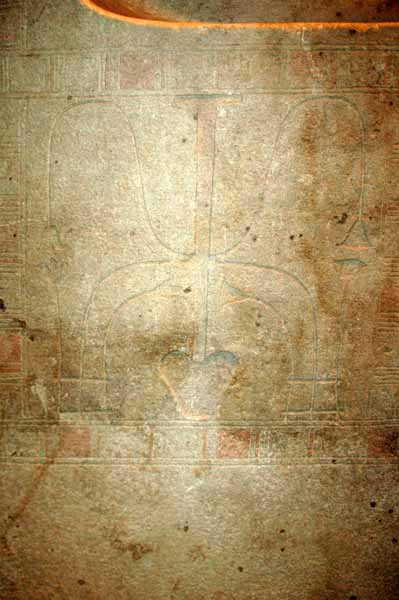
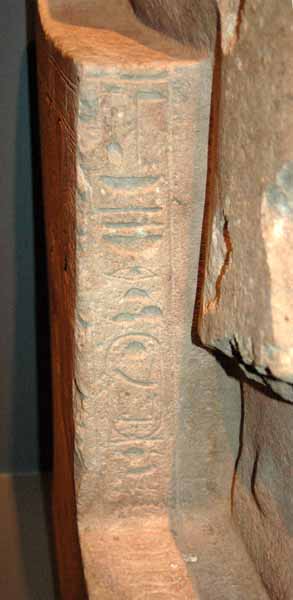
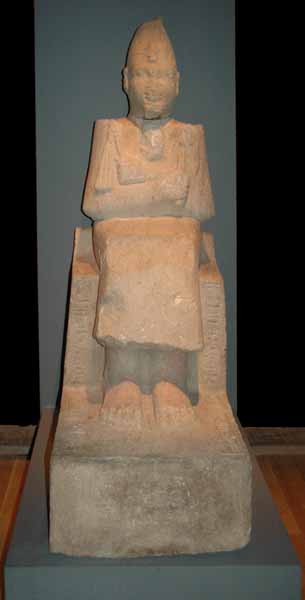
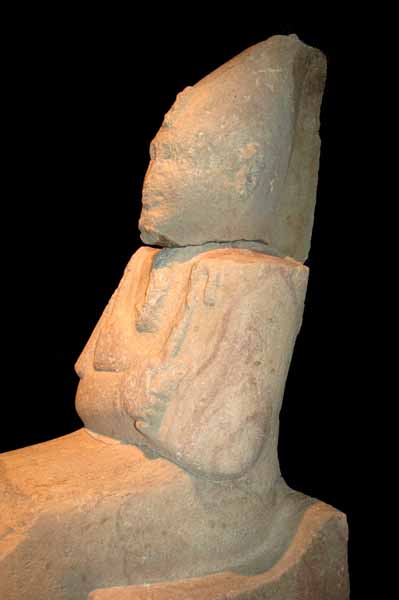 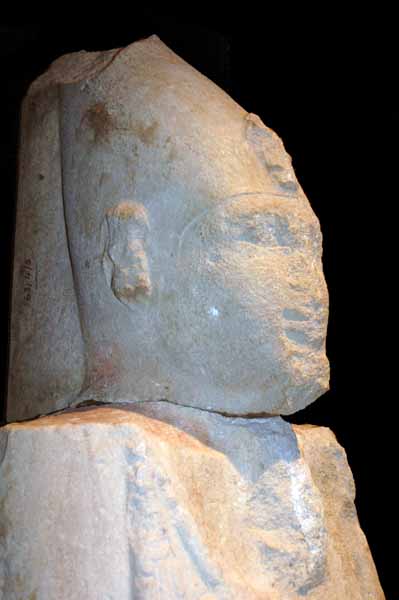 |
|





